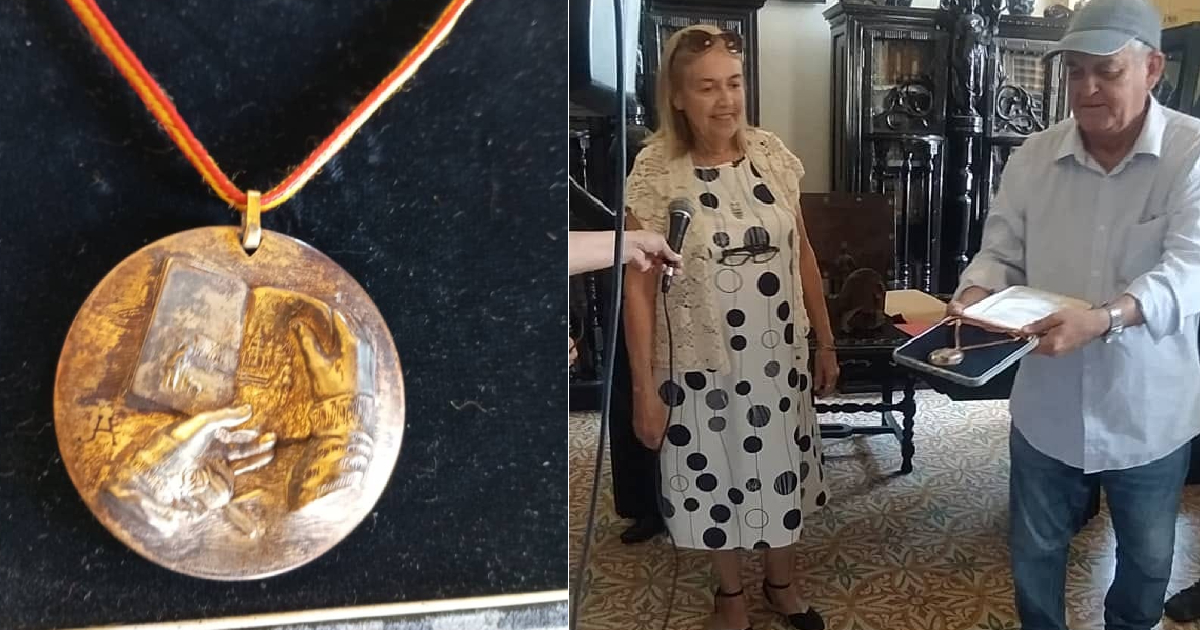
The Cervantes Prize awarded in 1993 to Dulce María Loynaz by King Juan Carlos of Spain was received this Tuesday by theLoynaz Brothers Cultural Center, located in the province of Pinar del Río.
According to a publication inFacebook of the Cuban institution itself was the director of the museumLuis Enrique Rodríguez Ortega, who received the important award obtained by the outstanding poet.
“31 years after this momentous event,Maria del Carmen Herrera, heir to the heritage of one of the most recognized authors in Latin America, bequeaths to the site that houses her work and promotes the development of literature such an important distinction," they said.
Born in Havana, December 10, 1902Dulce María was the daughter of General Enrique Loynaz y del Castillo of the Liberation Army.
Since she was little she nurtured a love for poetry and other arts. And that love for refinement and the aristocracy of the spirit was also transmitted to his brothers, Enrique, Carlos Manuel and Flor, all of them poets, although only Dulce and Enrique managed to publish them.
Before opting for isolation, and voluntarily giving up writing poetry, all of which occurred around 1959, Dulce traveled the entire world., visited the United States in 1920, and later visited Turkey, Syria, Libya, and Egypt.
In 1929, on the occasion of his trip to Egypt, on a visit toLuxor and to the newly discovered tomb of the young pharaoh he wroteLove Letter to King Tut-Ank-Amen.
Also in 1928 he had begun writing his novelGarden, whose writing took her seven years, until 1935, and which she only published in 1951. The novel, with a very brief plot, already predicts her later recollection, since it is about the meditation of a woman locked in her garden.
Even though he was seen very little in public, and granted few interviews, his work was clamorously recognized by Cubans after 1984, when he was a candidate for the Miguel de Cervantes Prize.
Finally, the beauty and quality of his work won the game over the many schematics who wanted to silence it as part of the "bourgeois past." In 1985, an edition ofSelected Poems and in 1987 she was nominated again for the Cervantes.
Finally,received the Cervantes Prize, from the hands of the King of Spain, in the Auditorium of the University of Alcalá de Henares, on April 23, 1993. This award established her once again, already at the end of her life, in the most stellar planes of the Ibero-American literary world, including her beloved Island.
In 1992, it saw the lightFaith of life, his last work, given years ago to his friendAldo Martínez Malo, with the condition that it would only be known when he had turned 90, or after his death. During these years she gave conferences, speeches, received awards and decorations and was honored by different Cuban cultural institutions.
The last public appearance of Dulce María Loynaz occurred on April 15, 1997., on the occasion of the tribute paid to him by the Spanish Embassy, in the portal of his house, celebrating the 45th anniversary of the publication of his novelGarden.
He died ten days later.in his mansion in El Vedado, surrounded by works of art, memories of other times and a dozen dogs.
What do you think?
COMMENTFiled in: